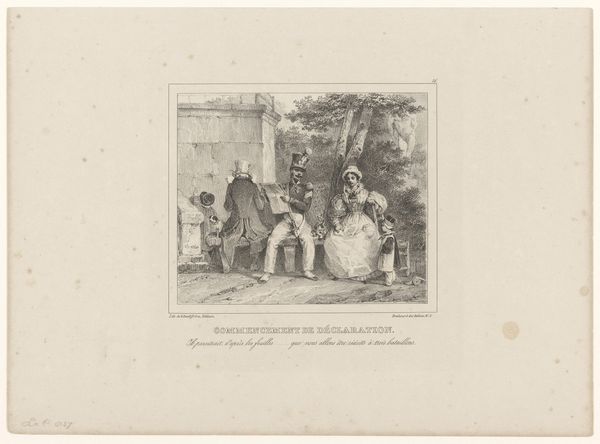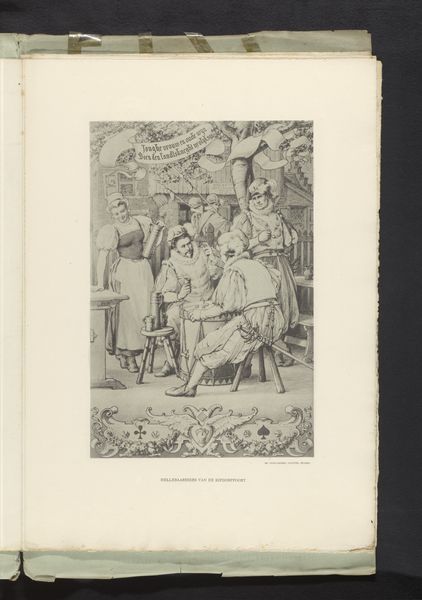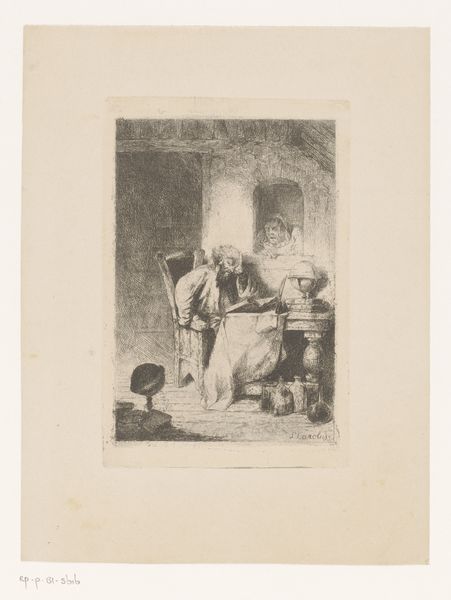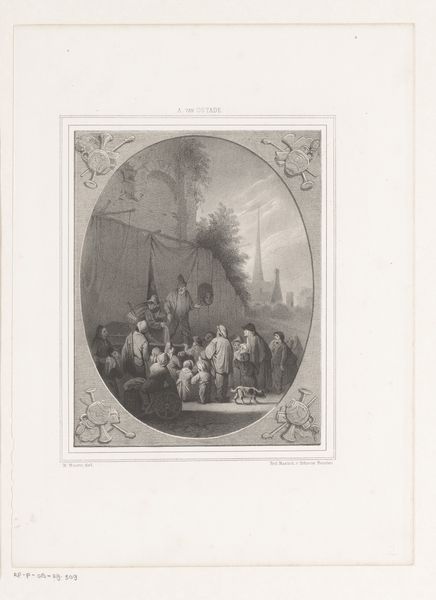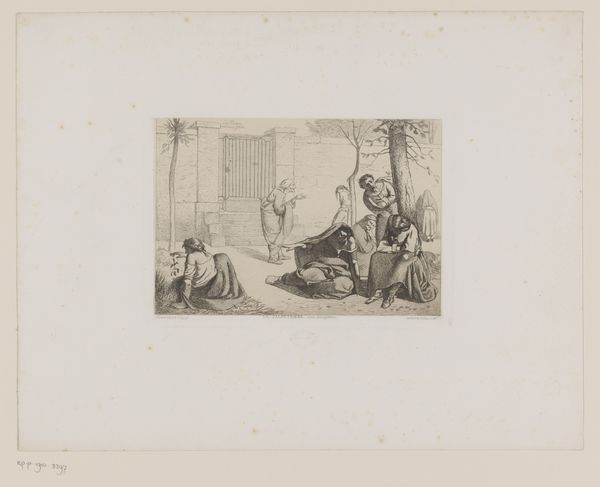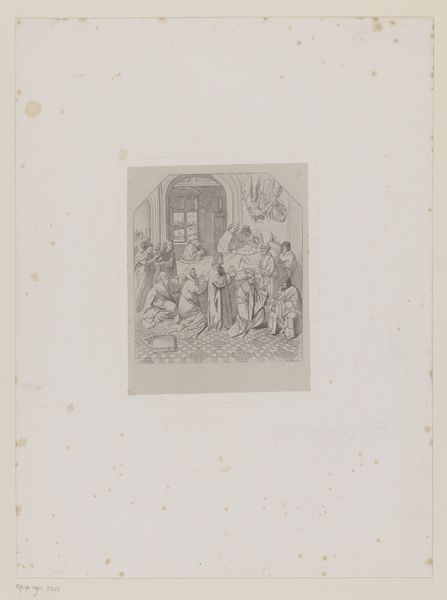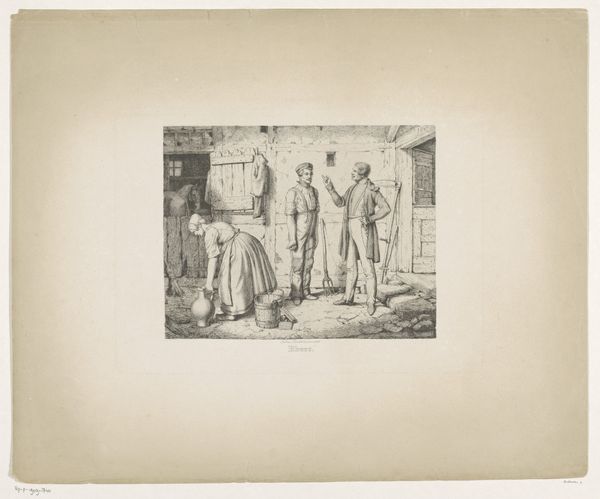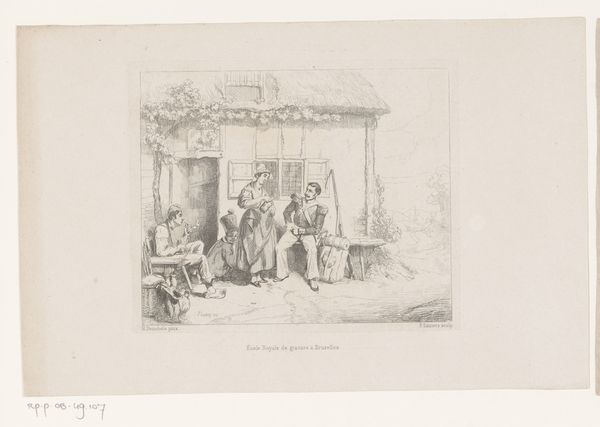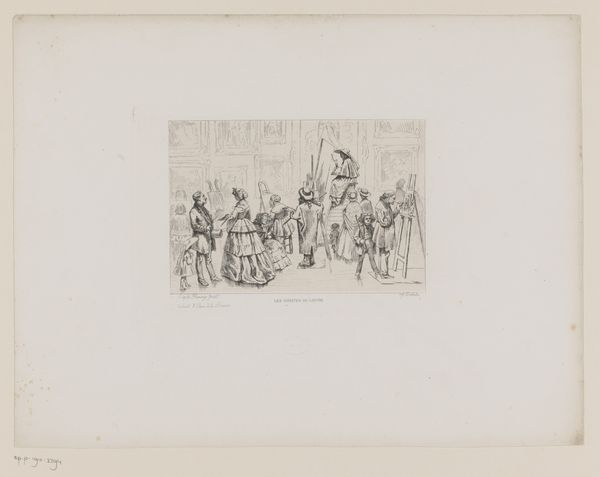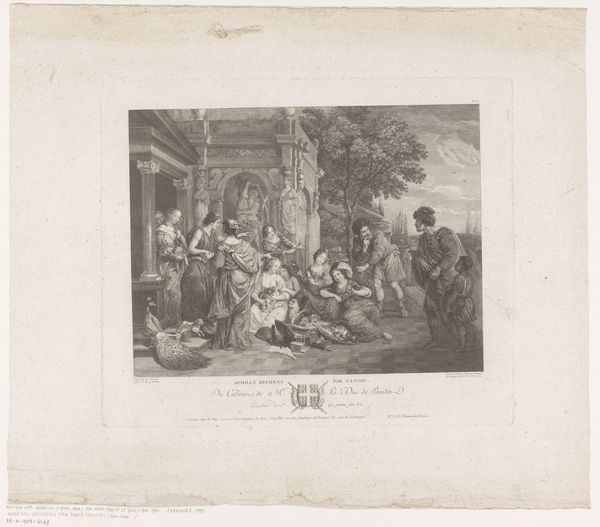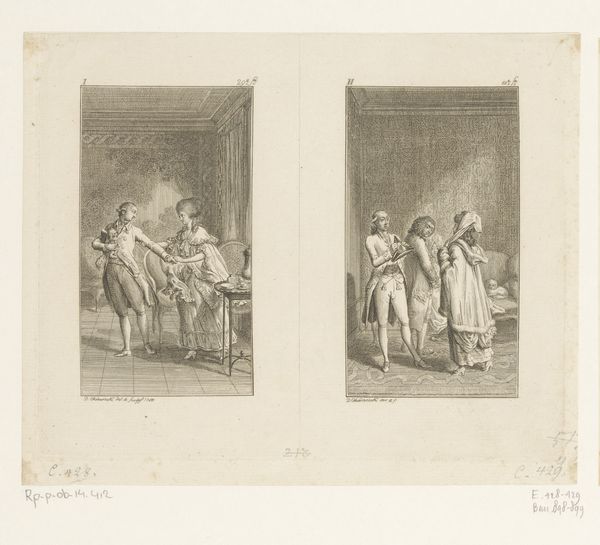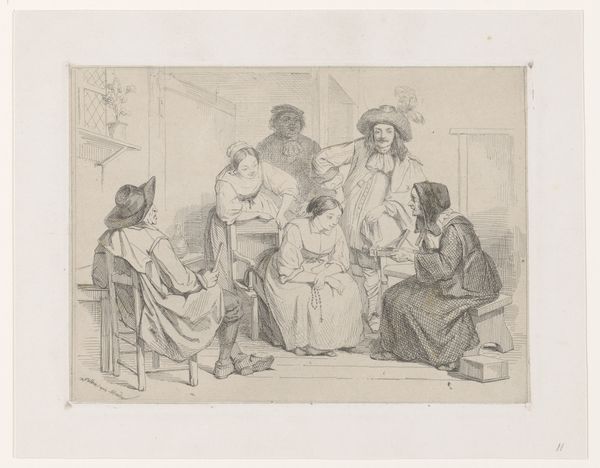
print, paper, engraving
#
narrative-art
#
baroque
# print
#
old engraving style
#
figuration
#
paper
#
line
#
history-painting
#
engraving
Dimensions: height 148 mm, width 180 mm
Copyright: Rijks Museum: Open Domain
Curator: Bernard Picart created this engraving, "Manius Curius Dentatus weigert geschenken," in 1734. It's part of the Rijksmuseum's collection and depicts a historical scene. My initial impression is how detailed it is, particularly for a work of this scale. It almost feels like a snapshot, or a captured moment from an oil painting. Editor: Snapshot is right! It’s stark. Something about the shading feels raw. There's movement—desperation almost—in those lines. I feel drawn into their small stage, and suddenly the lack of color sharpens my focus somehow, like peering back in time with a very old lens. Curator: I'd agree; there's definitely a theatrical quality to it. History paintings, even in print form, often served a didactic function, reminding viewers of virtuous behavior or historical turning points. Manius Curius Dentatus, the subject here, was a Roman consul known for his incorruptibility. The print likely commemorates an instance where he rejected bribes from the Samnites. It sends a pretty powerful political message, wouldn't you agree? Editor: Totally! I see the drama of refusal etched in every hesitant line! You almost sense he can still hear their hushed persuasive tones, the clash of morality and need right here, in black and white, two hundred and eighty years later. It asks, in every crosshatch: What would you do? Curator: That’s what’s so remarkable: how effectively Picart utilized engraving, with its limitations, to convey such emotion and depth. Prints like this circulated widely, making history and moral lessons accessible to a broader public beyond the elite. Editor: A paper theatre for morality plays, performed endlessly in the hands of common folk, and in that way made very, very uncommon! Thank you! Curator: Indeed, thank you!
Comments
No comments
Be the first to comment and join the conversation on the ultimate creative platform.
